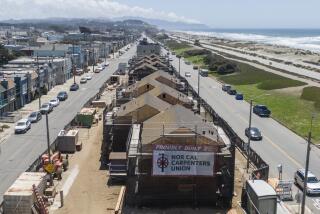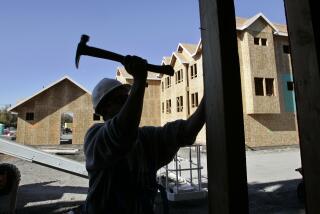Expert Predicts Food Price Inflation Will Fall to 2.2%
- Share via
WASHINGTON — Consumer food price inflation at the retail level is forecast to fall to 2.2% for all of 1996, the smallest increase in four years, as greater meat supplies crowd grocery shelves, the Department of Agriculture’s chief economist said.
The forecast by USDA Chief Economist Keith Collins showed food price inflation lagging behind the overall U.S. inflation rate, forecast at 3.1% in last week’s economic report to the president.
Last year, retail food prices rose 2.8%, up from a 2.4% rise in 1994.
Consumers are likely to pay less for fresh fruits and vegetables than last year, when spring floods in California’s salad bowl cut harvests and sparked a jump in retail prices.
At the same time, livestock producers with record numbers of animals are likely to send more cattle, hogs and poultry to market rather than face higher feeding costs. That will flood supermarkets and lower prices, Collins said.
“With meat prices down, the increase in the overall food [component of the] consumer price index is likely to be toward the lower end of a forecast range of 2% to 4%,” he said.
A detailed USDA forecast placed the number at 2.2%.
Food accounts for 16% of the total CPI, the government’s broadest measure of inflation.
While short supplies of grain are pushing up bakery and cereal prices, they account for less than a tenth of the food component of the CPI. Meat prices, in contrast, account for 24%, thus lowering the overall price rise.
In 1997, the USDA said, food prices may rise 2.4%, resulting from a slight increase in meat costs, and bring food inflation “nearer to the overall inflation rate,” Collins said.
By 1998, food prices may rise 3%, USDA’s long-range forecast said.
More to Read
Inside the business of entertainment
The Wide Shot brings you news, analysis and insights on everything from streaming wars to production — and what it all means for the future.
You may occasionally receive promotional content from the Los Angeles Times.










